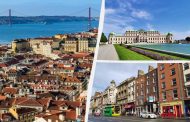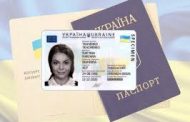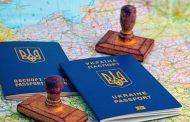Socotra has been variously described as the “Galapagos Islands of the Middle East” and “the Jewel of Arabia”. This Yemeni UNESCO World Heritage Site is the largest of the four islands in the Socotra Archipelago, located east of the Horn of Africa in the Arabian Sea.
Kyiv. Ukraine. Ukraine Gate – June 10, 2021 – Tourism and Travel
The unspoiled and exotic-like landscape of the island has intrigued travelers and scholars alike for decades. According to UNESCO, it is a site of “global importance due to its biodiversity with rich and distinct flora and fauna.” The United Nations estimates that 37 percent of the 825 plant species on Socotra, 90 percent of reptile species, and 95 percent of wild snail species are found nowhere else in the world.
Until the opening of its airport in 1999, it was very difficult to reach Socotra. This year, Air Arabia began operating a once-a-week direct charter flight to the island from Abu Dhabi – a flight of about two hours.
We caught the last round of the season – travel to the island stops during the monsoon season (late May to September). And while there are three hotels on the island, we opted for a camping trip. Pay attention though: this is camping, not camping. There is no electricity, no running water, no toilets or showers. So using a portable bidet, biodegradable wipes, and biodegradable soap are all indispensable to protecting the island’s delicate environment. Its capital, Hadibo, already has a serious garbage and plastic problem.
We first set up camp in Dehamri, a rocky coast covered in white coral. It’s the perfect place to snorkel – you can see all kinds of marine life in the crystal clear waters, including stingrays, turtles, and pufferfish (pro tip: bring sea shoes).
During our visit, the temperature was still around 35°C, and it was very humid at night, which made sleeping in the tent unbearable. On the plus side, sleeping outside gives you a clear view of the stars. The other nights we were not so lucky, as the wind caught on, shook the tents, and kept us up until sunrise.
Despite the lack of sleep, the beauty of the island made us feel rejuvenated and we kept exploring. We drove to Kalisan, where there is a natural pool to relax in, then set up camp at Ahir, a stunning location filled with giant white sand dunes at the edge of the mountains with great coastal views. The dunes are high and hard to climb (it took us about an hour to reach the top), but it’s definitely worth it.
There are many great locations to explore if you’re willing to spend hours hiking: the unique Dragon’s Blood Tree, for example, is so named because of its red tinge. Legend has it that the first dragon’s blood tree was created from the blood of a dragon that was injured when fighting an elephant. In Arabic, the tree is called dam al-Ikhwan – the blood of the two brothers – as the story goes that the tree first grew in the place where two brothers, Darsa and Samha, fought to the death.
There are also a number of abandoned Soviet tanks around the place, a constant reminder of the Soviet Union’s influence on southern Yemen. From 1967 to 1990 South Yemen (including Socotra) was the only communist country in the Arab world.
Besides tales of the past, we have met many wonderful locals willing to share their knowledge of the island, from Wagdy, our tour guide, to Abdullah the caveman who spends his days fishing in Detoah Lake and will happily invite you to his cave for fresh fish.
Seafood, cooked in a variety of ways, is the staple diet on Socotra. You can get lobster, stingray, and lobster for just $1. For breakfast, we enjoyed traditional Yemeni bean soup with bread, cheese, and local honey.
The return flight – the last scheduled flight before the end of the season – was canceled due to the hurricane. This delay gave us the opportunity to explore Hadibo and connect more with the locals, who were very helpful. The island has no working ATMs and getting money was difficult, as there is not much cash flow on the island. We recommend taking an emergency fund.
We also advise scheduling your visit to March – when the island’s famous bottle trees (desert roses) are in bloom – or to October or November, shortly after the monsoon season, when the island is green. But when you visit Socotra, it has no equal anywhere else on earth.
Read Also: Scotland Is Looking for a Permanent Supervisor on a Desert Island
Source: Ukrgate







